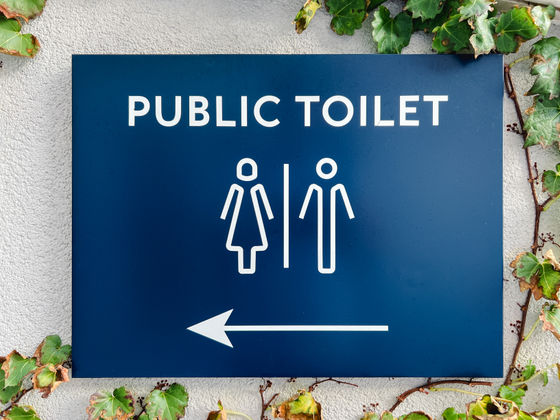Study finds that flushing the toilet produces 'clouds of harmful bacteria' twice as much in Japanese-style toilets as in Western-style toilets

By
A study conducted by Chinese researchers using ' squat toilets,' also known as Japanese-style toilets, which are common in Asia, found that this type of toilet, which is still commonly found in public washrooms and public facilities, is particularly prone to generating aerosols containing bacteria such as E. coli and Staphylococcus aureus.
Quantitative microbial risk assessment of bioaerosol emissions from squat and bidet toilets during flushing - Ali - Risk Analysis - Wiley Online Library
https://onlinelibrary.wiley.com/doi/10.1111/risa.70000
Ventilation fans can significantly lower the | EurekAlert!
https://www.eurekalert.org/news-releases/1073812
Public Restrooms Revealing Hidden Health Hazards
https://studyfinds.org/public-restroom-toilets-spray-bacteria/
Previous studies on flushing toilets have shown that they release tens of thousands of droplets when flushed, but most of this research has focused on 'bidet toilets,' or Western-style toilets that require you to sit down to use the toilet.
Research shows that closing the toilet lid when flushing does not prevent viral contamination, so how can we prevent viral contamination? - GIGAZINE

In a study published in the February 17, 2025 issue of the scientific journal Risk Analysis, Wajid Ali and his colleagues from the School of Environmental Sciences at China University of Geosciences in Wuhan investigated the concentration of bioaerosols floating in the air in office bathrooms in China. Bioaerosols are tiny particles that contain bacteria.
Measurements were conducted in two locations, one using Japanese-style toilets and one using Western-style toilets, and it was found that Japanese-style toilets released significantly more bacteria into the air than Western-style toilets, with bioaerosol concentrations of Staphylococcus aureus being 1.7 to 2.6 times higher and bioaerosol concentrations of Escherichia coli being 1.2 to 1.4 times higher.

It is assumed that Japanese-style toilets have shallower bowls than Western-style toilets, which is why more water splashes out.
The measurements were also taken before and after using the toilet. This confirmed that the second flush, which involves the presence of excrement, released higher bioaerosol concentrations into the air than the first flush, which involves flushing an empty toilet seat, with Staphylococcus aureus and Escherichia coli released into the air at up to 1.8 times and 1.4 times, respectively.
In addition, the second flush not only increased the bioaerosol concentration, but also released finer particles, which are more likely to be inhaled deep into the lungs and therefore more risky.
The important thing is that ventilation can significantly reduce the risk. Measurements conducted with a ventilation fan running showed that the amount of bacteria in the air was about half that of when ventilation was not performed, and the risk of inhaling bioaerosols was reduced by an order of magnitude. In other words, the health impact of bacteria dispersed in the air was reduced by about one-tenth.

The findings highlight the importance of proper ventilation in toilets.
'Our findings highlight the significant health risks posed by exposure to bioaerosols in public toilets,' said Ali, lead author of the paper. 'We also believe that strengthening ventilation systems and optimizing fan efficiency and ventilation rates could effectively reduce bioaerosol concentrations and the risks to people.'
Related Posts:
in Science, Posted by log1l_ks






